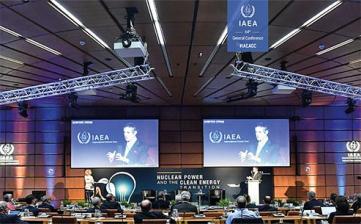
Participants of the Fourth Generation Nuclear Power System International Symposium reached consensus on the following issues:
1.Electricity demand will show a significant increase in the next 50 years. This trend is particularly pronounced in developing countries.
2.At present, there are 2 billion people without electricity, which makes the quality of life of this part of the population on the planet low.
3.There is growing concern about air pollution and greenhouse gas emissions worldwide.
4.At present, nuclear power provides 17% of the world's electricity demand without emitting atmospheric pollution gases and greenhouse gases.
5.In the future, nuclear power will continue to maintain an important supplier of electricity and the advantage of keeping the atmosphere clean.
6.Although the economic competitiveness of the third-generation nuclear power technology must be improved, it is still a viable choice for the nuclear power industry in some countries in the next 20 years.
7.The future nuclear power technology will develop in harmony with the future nuclear fuel cycle.
8.The development of nuclear power in the future should take into account the requirements of strengthening economy, safety, safety guarantee of energy supply, waste management and non-proliferation. These technologies must be equally available to industrialized countries and industrialized countries, and can provide technology transfer and economic participation to buyer countries.
9.The fourth-generation nuclear power system should address these issues in a way that promotes public acceptance, especially by providing economically competitive options.
10.The government can promote the improvement of nuclear power technology through the following channels:
① Carry out long-term research, development and verification;
②Solve the problem of waste disposal;
③Invest in manpower and technical infrastructure;
④Maintain effective nuclear control in the 21st century;
⑤The fourth-generation nuclear power system should be studied as a future option;
⑥ This kind of research should be carried out on a multilateral basis, including industrialized countries, industrialized countries, and, if possible, intergovernmental organizations;
⑦As the next step, a technical group composed of representatives of attendees at this meeting designated the task of further discussing technical matters related to fourth-generation nuclear power and put forward recommendations on possible future multilateral cooperation.
The meeting was attended by officials from the following countries: Argentina, Brazil, Canada, France, Japan, South Korea, South Africa, the United Kingdom, and the United States.

The seminar reviewed the goals that should be achieved in order for the fourth-generation nuclear power system to become a dynamic and excellent energy system in the world within 20 years from now. In the current early stage, these goals should be seen as desired performance indicators, rather than fixed system requirements that must be met.
1.Competitive power generation cost
The power generation cost of the fourth-generation system should be competitive with the cost of other forms of power generation in the country or region where it is located. Comparing prices).
2.Acceptable investment risk
The investment risk of the fourth-generation project must be attractive compared with other large-scale investments in the national or regional market, including the required total investment and investment risk (in the United States as an example, the attractive planned investment scale and risk level may be US$1,000 per kilowatt or less).
3.Limited project approval and construction time
For the fourth-generation nuclear power plant, the time from signing the purchase contract to the first sale of electricity (project progress time) must be less than 4 years. As part of this goal, the time from pouring the concrete to the reactor start-up test (construction time) must be less than 3 years.
4.Low core damage probability
Fourth-generation reactors must have a very low probability of core damage.
5.It is confirmed that no serious core damage will occur
Fourth-generation reactors must verify that no serious core damage will occur to any hypothetical initiating event. This verification must be completed through the overall reactor test.
6.No off-site emergency response is required
There is no credible scenario of radioactive release that requires off-site response to ensure public safety.
7.Principles of ALARA Radioactive Irradiation
The design of the fourth-generation reactor must meet the ALARA principle of radioactive irradiation during the entire lifetime.
8.Tolerate human error
Fourth-generation reactors must be highly tolerant of human error.
9.Solve all waste streams
The fourth generation system must solve all waste streams perfectly.
10.Public acceptance of waste solutions. All nuclear waste streams must have politically and publicly acceptable solutions. There must also be supplementary solutions to the waste of the former and existing power plants.
11.Minimal waste
The fourth-generation system must minimize the amount of waste generated in practice.
12.It has the least attraction to possible nuclear weapons proliferators.
The development of the fourth-generation system should maintain its existing state. In this state, the misuse or abuse of the civilian nuclear fuel cycle is unattractive to potential nuclear weapons proliferators. This applies to domestically produced fuel cycle equipment that is also suitable for export.
13.The design of the internal and external nuclear proliferation prevention system of the fourth generation should rely on the inherent non-proliferation performance as much as possible. The external barrier should be supplemented by the specific fuel cycle.
14.Evaluation of non-proliferation
The fourth-generation design must be evaluated for non-proliferation based on the established guiding principles.
















